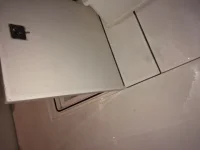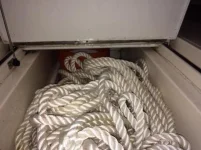Reefgeorge
Well-known member
- Joined
- May 31, 2010
- Messages
- 563
- Status
- OWNER - I own a Hatteras Yacht
- Hatteras Model
- Not Currently A Hatteras Owner
I have a 47 Cabo with two fishboxes in the cockpit sole. Each box has two lids on each end of the box that hinge towards the middle of the box. In the center in a fixed fiberglass pad with non skid to match the sole and each lid's piano hinge screws fasten into the edge of this fixed pad. The screw that go into the fixed pad are stripping. I don't know what they bite into after they penetrate the fiberglass and gelcoat but nothing bigger or longer will bite into the holes so whatever is in there no longer has any holding power.
Does anyone have a suggestion on how to repair this issue? The center pad is probably removeable but its not obvious how.
Thanks,
George
Does anyone have a suggestion on how to repair this issue? The center pad is probably removeable but its not obvious how.
Thanks,
George




